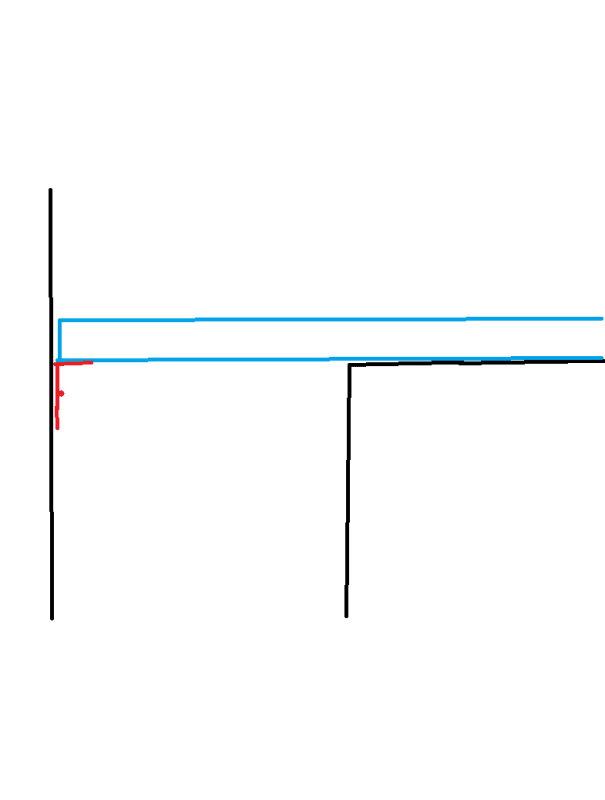
Hi all,
I attached a sketch (side view) of a problem I'm looking to solve. Blue represents the beam, red is the angle iron, and black is the concrete slab and wall. It consists of a set of beams that extend past the slab and are flush with the opposite concrete wall. To avoid the beams being in cantilever I am planning on bolting an angle iron into the wall. The angle iron has 1 row of 1/2" bolt holes along the length of the plate. I'm planning on having two bolts for each angle iron. How would you go about determining the bearing capacity of the angle iron in this case? All information about angle iron dimensions and steel grade are available.
P.S. to avoid the Angle iron "flange" being in cantilever, I will put a small 2" thick piece of wood or a small layer of plywood close to the wall so the beam would be bearing directly on the edge of the angle iron. In this case, could one assume that the angle iron will be acting in pure shear?
Thank you for your time.

